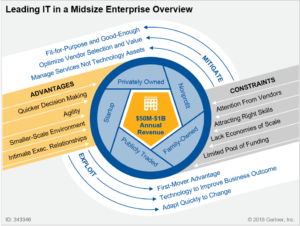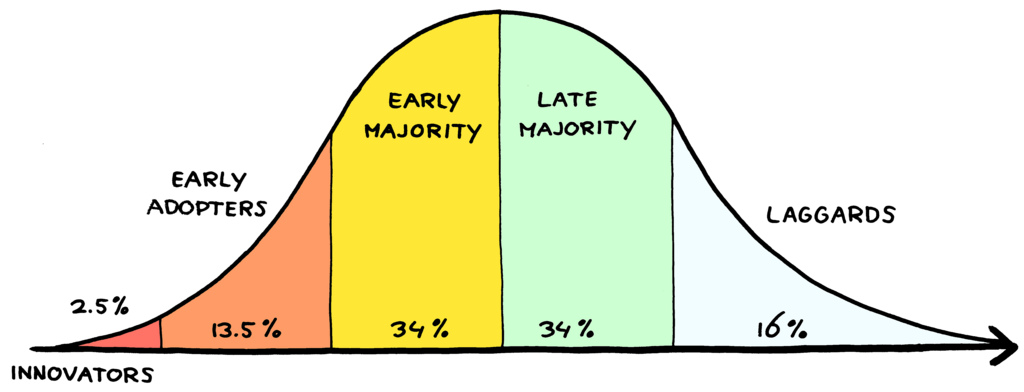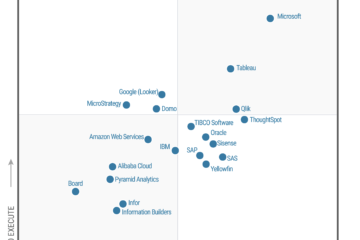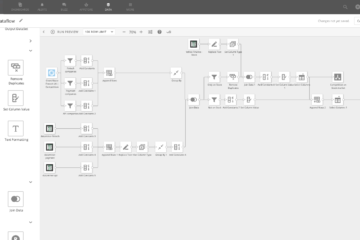Last week, I had the incredible opportunity through my current employer to attend Gartner Data & Analytics summit in London, one of the top conferences around emerging trends in Data and Analytics for mid-sized and large companies.
This year about 1600 people attended the event, expecting to get invaluable information on applying the latest data and analytics technologies to generate new revenue. Most attendees were C-level executives such as CIOs, CTOs or Head of Analytics from top companies globally. Yet, successful mid-sized enterprises were also present as attendees and vendors and niche players from Gartner’s Magic Quadrants such as Fiverr, SparkGeo, Semarchy, Dataiku, Sinequa, Toucan Toco, Squirro, etc.
There was even a round-table focused on how Midsize Enterprises Can Use Data and Analytics to Survive and Thrive, chaired by the Gartner Analyst Alan D. Duncan.
It is true that even if Gartner is a market research company focused on the top companies and organisations in the world, the trends they identify are often applicable to smaller organisations and can definitely be leveraged by entrepreneurs to identify new niche and opportunities in the market.
I was therefore very keen to get some insights from Gartner on Data and Analytics for mid-sized companies and starups as well as the key Strategic Technology Trends they identified for 2018.During the conference, I interacted with two different Gartner Analysts and could gather some take-away for all the entrepreneurs and niche startups out there.
Take Away 1: It is not only about the tools you use!
As a student in the Msc of Information Systems Management and Business Consulting, I made a research paper on the impact of Business Intelligence & Analytics software on the effective implementation of Competitive Strategy of medium-sized companies which concurred the following:
- The use and implementation of a BI & Analytics software does not threaten the competitive strategy orientation of one company.
- The implementation of BI & Analytics software has been able to enable, support and strengthen any type of competitive strategy: differentiation, mixed and volume based.
Now working in the sector of Data and Analytics, I discussed with Gartner Analysts around the results of my research. They shared with me some results of their own studies. As expected, they agreed that the use of Data and Analytics for mid-size companies was a key to enable the development of competitive advantages. Yet, the core of the issues resides outside the choice of the tool and its usage.
Tools like BI and Analytics software enable companies to embrace complexity. By managing and enabling complexity in a business model, this is how a company can develop a competitive advantage. But this can only be achieved through several steps that are not all technology focused:
- Embracing data completeness to provide more context about the data captured: this require more data sources but also great metadata management. It is essential to leverage the full potential of BI & Analytics tools. It is also the foundation from where AI and Machine Learning processes can be built.
- Understanding the motives behind decisions & actions for strategic planning: As data is now contextualized, the business need to leverage this data and insights to understand the scope and context of a decision, identify the likely outcomes and finally the best course of action.
- Timely response & decision making: Being competitive is a play between being reactive and being innovative. A business is competitive when it is able to understand quickly the complex environments it is faced with.
As a result, it is more about the Data and the Mindset within the organisation than the tools implemented. Small and medium enterprises should leverage tools to answer a business issue and provide direct value. Small and medium enterprises don’t have time and money to waste on complex solutions that they will ultimately not used.
Take Away 2: It is all about simplicity & value
This is very close to the “Data and Mindset” concept mentioned above. As a startup or mid-sized company, key day-to-day issues are often resources and operation. Startups can have issues to find the right talents and often have to come up with creative ways to retain their employees. Similarly, small companies’ time is focused on operational work and survival, rarely on extending the business model or identifying new opportunities.
As a result, when buying a Data or Analytics tool, small and medium enterprises should focus on the agility, simplicity and usage of the tool in order to bring value to the business as soon as possible.
If a tool is not delivering value or is too complex to be used by your employees, it is time to re-evaluate it.
Startups need to avoid falling in the trap of doing things because competitors are doing it – i.e. trying to “do things right“. They need to focus on their core strengths and vision and “do the right thing“. This is true for the relationship between the company and its clients but also internally: why using the same tool as everyone if this tool is not adapted to your business/process/people?
Take Away 3: Best practices to Next practices
As a startup or niche player, a business may either be at the beginning or end of the adoption curve: some may be innovators in their field but laggards in terms of technology adoption or data & analytics maturity (making most decisions on gut feeling). As innovators, startups wouldn’t be looking for consulting or solutions to provide Best Practices – they would be looking for support in building innovative Next practices. Similarly, if a small company missed the adoption of a specific technology that is now mainstream, it won’t enable the company to compete by implementing it now that it is being replaced with other new technologies in the market.
This is the same for the lead clients of such companies. Startups and niche players often spend too much time trying to sell their products or services to the whole market. They need to be smart at it:
- Innovators and early adopters of your niche or innovative product need to get coaching on how to use the product and they need to be recognized as the people who are part of a new wave
- The clients part of the early majority of adopters will require education. For these clients, simplicity and accessibility of the product is key. They also need to find out quickly how the product is bringing them value and why is a best practice.
- To be able to approach clients in the late adoption majority, business will need to raise awareness on their product by highlighting simplicity and avoiding complexity.
- Finally, laggards should be avoided as they will most often not get the value-added proposition of the business.
Conclusion and impact of Data and Analytics for Mid-sized companies
As a startup or small company focused on emerging technologies, it is key that you focus on understanding the complexity in your business through gathering data and information and providing some context to this data. When making strategic choices for your company or when engaging with your customers, you need to keep things simple and focus on the value added. Data and Analytics for mid-sized companies is important but it is not the key to all the issues the business can face. Finally, keep in mind the adoption wave and the fact that some customers will expect you to sell Next Practices when others will expect Best Practices and others will never get the value you provide – after all you are experts in your niche!
At Rising Digits, we can help startups and small companies to understand their competitive landscape as well as identifying their key strengths through startup consulting. We are focused on the business outcome and provide actionable insights that will support your vision.
Feel free to reach to us.





